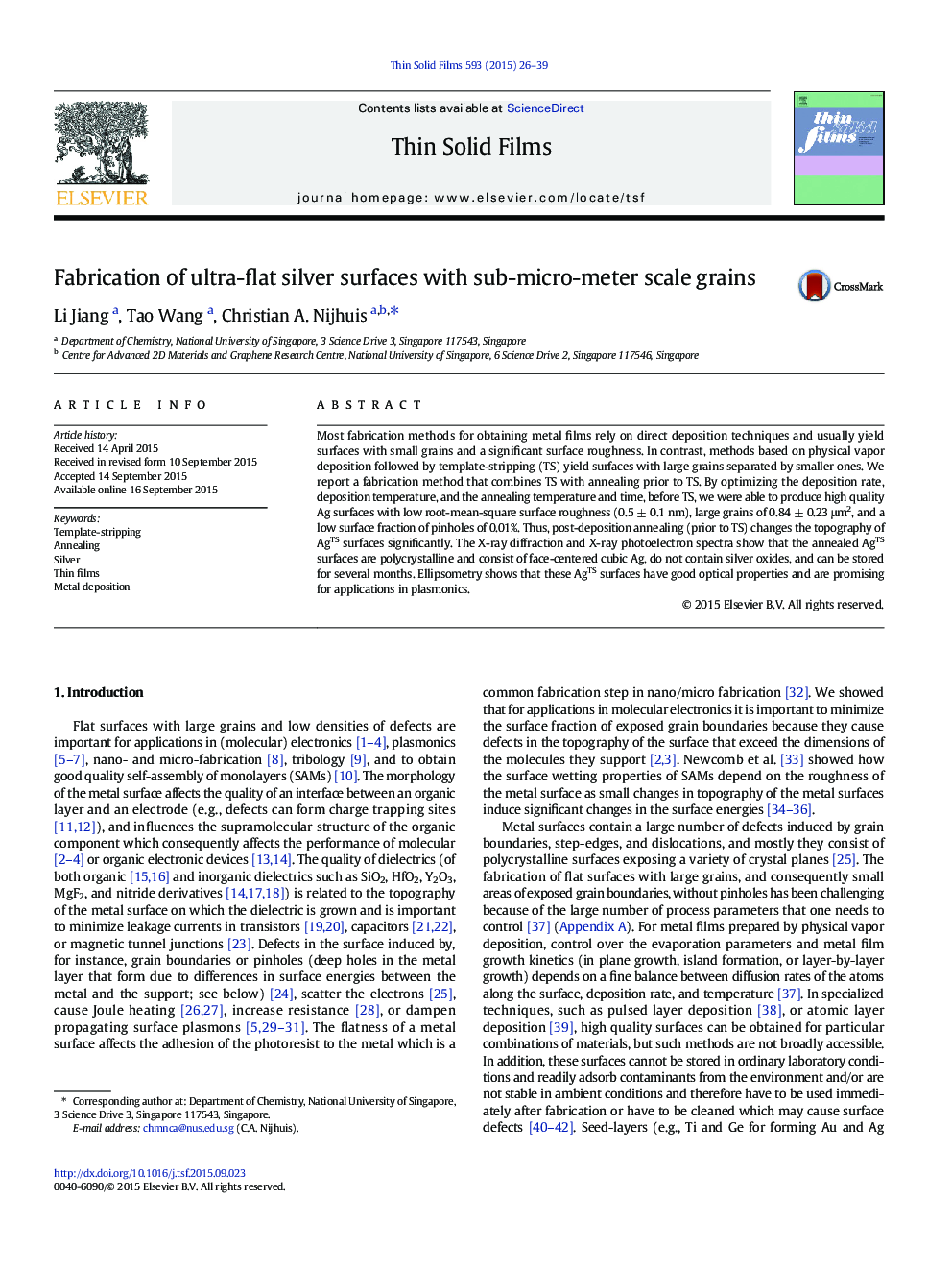| Article ID | Journal | Published Year | Pages | File Type |
|---|---|---|---|---|
| 1664331 | Thin Solid Films | 2015 | 14 Pages |
Abstract
Most fabrication methods for obtaining metal films rely on direct deposition techniques and usually yield surfaces with small grains and a significant surface roughness. In contrast, methods based on physical vapor deposition followed by template-stripping (TS) yield surfaces with large grains separated by smaller ones. We report a fabrication method that combines TS with annealing prior to TS. By optimizing the deposition rate, deposition temperature, and the annealing temperature and time, before TS, we were able to produce high quality Ag surfaces with low root-mean-square surface roughness (0.5 ± 0.1 nm), large grains of 0.84 ± 0.23 μm2, and a low surface fraction of pinholes of 0.01%. Thus, post-deposition annealing (prior to TS) changes the topography of AgTS surfaces significantly. The X-ray diffraction and X-ray photoelectron spectra show that the annealed AgTS surfaces are polycrystalline and consist of face-centered cubic Ag, do not contain silver oxides, and can be stored for several months. Ellipsometry shows that these AgTS surfaces have good optical properties and are promising for applications in plasmonics.
Related Topics
Physical Sciences and Engineering
Materials Science
Nanotechnology
Authors
Li Jiang, Tao Wang, Christian A. Nijhuis,
